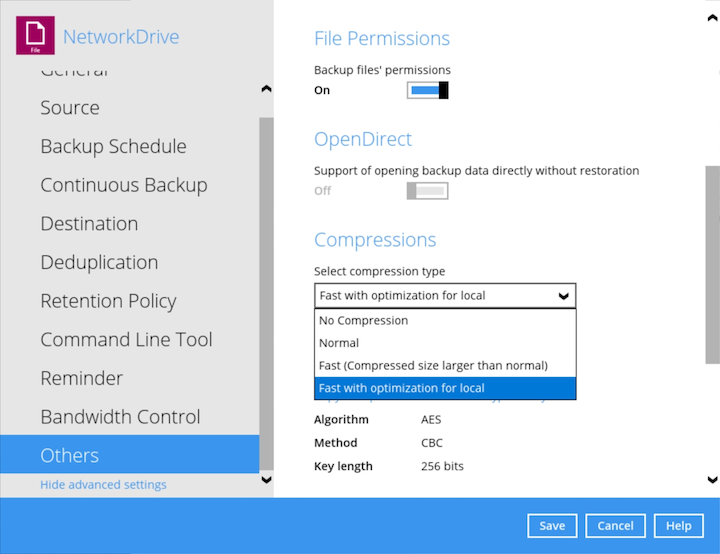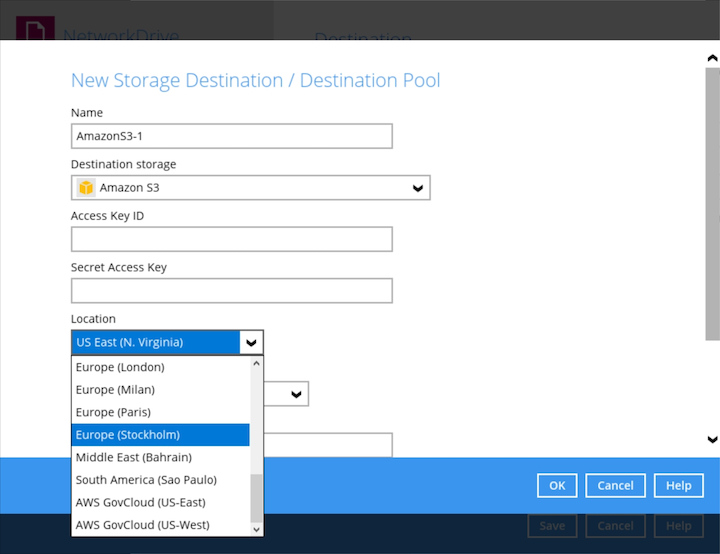Article ID
Last Reviewed Date
Product Version
Operating System
Description
This Know-How article contains information on factors that can affect the speed of a backup job.
Solution
Factors that can affect the speed of a backup job:
- Hardware specification
Check on the hardware specification of the client computers and backup server (RAM available, processor speed), are the resource sufficient for the backup operation.
Check if the CPU usage is high during the backup.
- For computer running on Windows, you can view the CPU usage with the Windows Task Manager.
- For computer running on Linux / macOS, you can view the CPU usage with the "top"command:
If the CPU usage is constantly maxed out during the backup, it may suggest that the CPU power of the machine is insufficient for the backup operation
- Backup source data size (number of files and size of files)
How many files are selected as the backup source?
Check if the backup source contains a large number of files within a small number of directories.
If the backup source contains a large number of files (e.g. over a million files), you may consider splitting up the backup set into multiple backup sets with a smaller number of files.
Also, alter the amount of memory available to AhsayOBM.
- Location of the backup source (local / network drive)
Check if the backup source is located locally or over a network.
If the backup source of the backup job is set over a network, the backup speed may be affected depending on the network traffic and speed.
- Location of the temporary directory (local / network drive)
Check if the temporary directory specified for the backup set is located locally or over a network.
If the temporary directory is specified on a network partition, the backup speed may be affected by network traffic and speed.
- Encryption and compression setting
Check on encryption key length configured for the backup set in concern.
Backup data can be encrypted with a 256-bit key length, which may slow down the backup operation for machines with insufficient resources.
Also, check on the compression setting for the backup set in concern.
Backup data can be compressed using Normal or Fast compression type. Consider changing the compression type of the backup set to 'Fast' or 'No Compression' if backup speed is a greater concern than quota usage:

- I/O utilization and location of the user home volumes (only applies to backup set with backup destination to CBS)
For AhsayCBS with 'local' user home (e.g. locally attached disk), check on the local disk I/O utilization of the User Home volume.
If the I/O utilization of the disk in concern is high during the backup, consider performing the backup job a an alternate time. Also, consider adding additional user home volumes and then spreading the backup accounts onto the user home volumes evenly.
- For computer running on Windows, you can view the I/O utilization with the Performance Monitor (perfmon.msc).
- For computer running on Linux / macOS, you can view the I/O utilization with the command "iostat 1" or "vmstat 1":
- Number of delta to be generated
How many delta files are being generated, and their size?
The speed of a backup job can be affected if the number of delta files to be generated is large, or if the delta files to be generated is large.
- Sequential or Concurrent backup mode
Check on the backup destination backup mode of the backup set:
-
Sequential Mode
The backup job will upload the backup data to the selected backup destination one by one (e.g. sequentially).Data will be first uploaded to the first backup destination in the list (list in the destination setting of the backup set). Once completed, data will be uploaded to the next backup destination.
-
Concurrent Mode
The backup job will upload the backup data to the selected backup destination simultaneously.
Backup job in sequential mode is slower (in comparison to concurrent mode), but will take less resources (e.g. memory, CPU, bandwidth ... etc.) of the client computer to complete. -
- Cloud storage provider
Check on the cloud storage providers setup as backup destination.
AhsayCBS supports backup to all major cloud storage providers such as Amazon S3, Microsoft Azure, Google Cloud Storage, Dropbox, OneDrive, OnDrive For Business, Rackspace, FTP/SFTP server, AWS Compatible Cloud Storage and OpenStack Compatible Storage.
When choosing a cloud storage provider, it is important to consider if they have data centres near your physical location, and the storage plan you choose should offer the highest availability and lowest latency to provide optimal backup/restore performance.
- Cloud storage region setting
Check the region setting of the selected cloud storage if applicable.
For example, if you wish to backup your data to Amazon S3, the backup client computer is in Europe. The 'Location' setting of the corresponding backup destination must be set to a location nearest (e.g. EU (Ireland):

- Amount of memory (Java heap size) available
Check the Java heap size settings and modify the settings if the currently allocated size is insufficient for the backup operation.
- Internet connection speed
Check the connection speed between the AhsayOBM / AhsayACB client and the backup destination.
Check if the backup job is performed over a Local Area Network (LAN) or a Wide Area Network (WAN) environment. Ensure that the bandwidth available suits the amount of data you intend to transfer. Using a dedicated Internet connection is recommended to ensure optimal backup performance.
As an example, if you need to backup 100 GB of data to a cloud storage with high availability and low latency plan, with no hardware performance bottlenecks:
- Using a 10 Megabytes/s (MB/s) upstream with 50% overhead, the initial backup job will take 4 Hours, 16 Minutes to complete.
- Using a 10 Mbit/s (mbps) upstream with 50% overhead, the initial backup job will take 34 Hours, 08 Minutes to complete.
Use an online file transfer calculator to estimate the backup time and if the bandwidth available is sufficient.
Finally, if you access the Internet via a proxy server, check for any bandwidth restrictions on the proxy server.